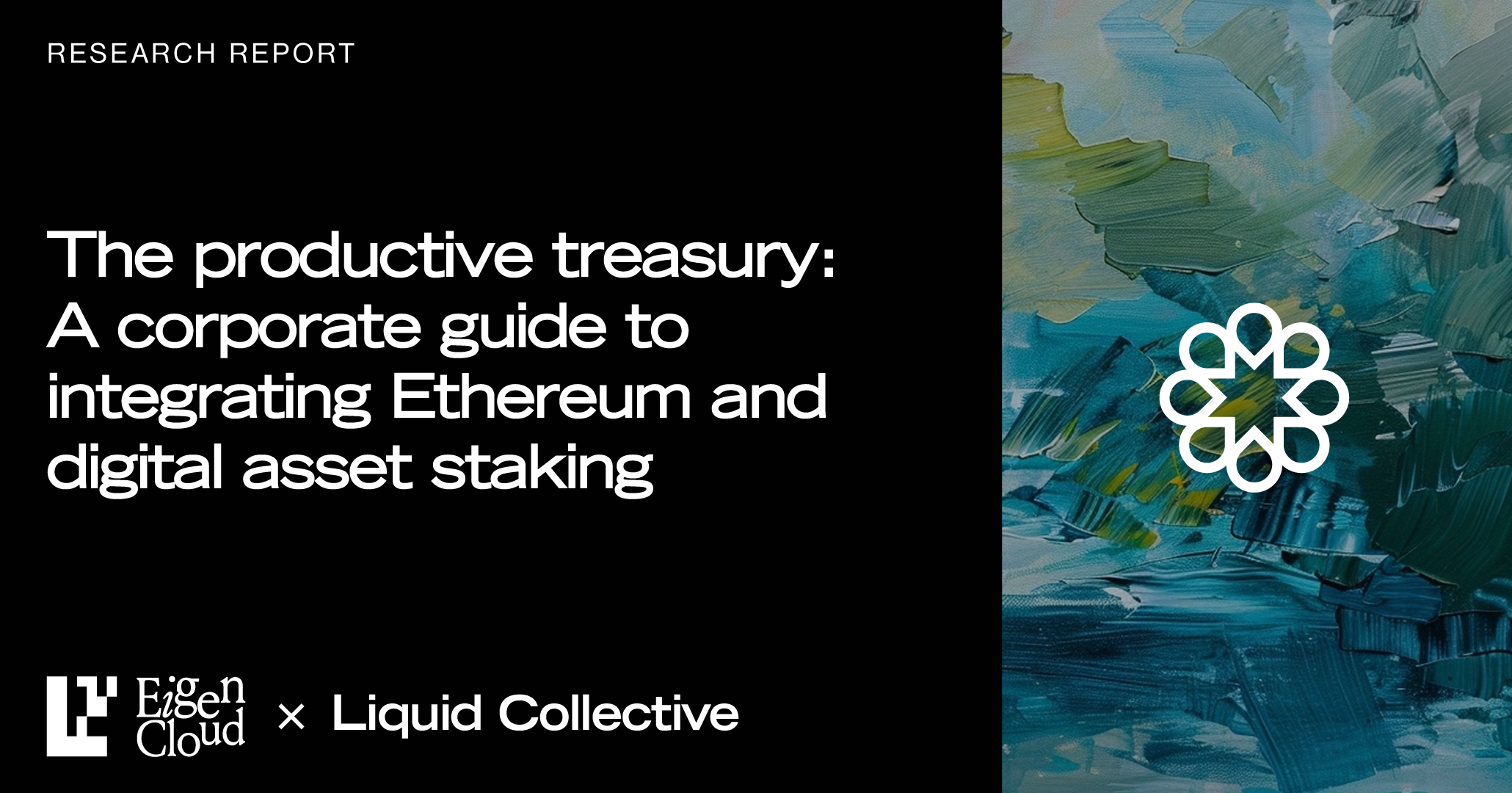Feb 15 2024
Over a quarter of all ETH in circulation is currently staked. What does it mean to participate in staking on Ethereum?
Staking on Ethereum is the process of participating to help secure the Ethereum network, which requires locking up a certain amount of ETH. Validators are responsible for processing transactions, creating new blocks, and maintaining network security. In return, they can earn ETH network rewards in the form of additional ETH.
What does staking Ethereum mean?
The process of staking and validating is part of Ethereum's consensus mechanism, known as proof of stake (PoS). In September 2022, Ethereum upgraded to the more energy-efficient PoS consensus in a significant shift away from the energy-intensive proof of work (PoW) consensus mechanism, which is currently used by the Bitcoin network and others.
What was The Merge to upgrade Ethereum to proof of stake consensus?
Ethereum’s mainnet is made up of two layers:
- The consensus layer focuses on achieving agreement among the network participants
- The execution layer is responsible for processing transactions, executing smart contracts, and maintaining the state of the blockchain
From its genesis in 2015 until The Merge in 2022, Ethereum used proof of work as its consensus mechanism. However, there was a longstanding plan to transition the network to the more energy-efficient proof of stake (PoS) consensus mechanism once PoS technology was further developed.
In December of 2020, Etheruem’s beacon chain, a PoS consensus layer, was launched in parallel to the mainnet chain. The launch of Ethereum beacon chain enabled users to stake their ETH, become validators, start reaching consensus, and begin receiving ETH network rewards. The beacon chain did not process mainnet transactions at this stage. By agreeing on active validators and their account balances, it was instead reaching consensus on its own state.
In September 2022, ‘The Merge’ merged the beacon chain consensus layer to Ethereum’s existing execution layer, effectively swapping out PoW consensus (miners) for a new PoS consensus (validators + stakers), while the network remained fully functional and retained its entire transaction history. This is largely viewed as a landmark technological feat, with the network swapping its core engine, remaining operational, and reducing its energy usage by over 99%, with no effect on users in the process.
You can learn more about Ethereum’s Merge in this article from the Ethereum Foundation.
The transition to PoS not only enhanced the network’s efficiency but also helped to democratize participation. Validators, replacing miners, stake ETH to secure the network, process transactions, and create new blocks. These validators have more accessible hardware requirements, and require less energy availability, than operating PoW miners once required. There are now solutions in place to allow ETH holders to actively participate in staking on Ethereum without operating the hardware on their own, including the software solution liquid staking.
How does staking ETH work?
To become a validator on the Ethereum network requires staking 32 ETH. This stake acts like a security deposit, ensuring validators do an adequate job of maintaining the Ethereum network and overall act in the network's best interest when performing staking duties. Misconduct or failure to participate can lead to penalties, known as slashing, a risk that serves to reinforce the integrity and reliability of the network.
Those who are unable to operate validator infrastructure on their own, or who don’t want to stake a full 32 ETH to do so, can still actively participate in staking on Ethereum by using technological solutions that expand direct participation.
To encourage ETH users to participate in staking and to unlock liquidity, a software solution was developed enabling users to stake any amount of ETH, and in return receive a token that represented their staked ETH, which can be used as collateral or elsewhere in decentralized finance to earn other yields. This is known as liquid staking.
The growth of liquid ETH staking, a leading technological solution for participating in staking on Ethereum, has redefined the PoS landscape. Those who stake their ETH using a liquid staking protocol like Liquid Collective receive a liquid staking token (LST), which can be transferred, traded, and used in DeFi or supported dapps while the participant continues to contribute to network security.
What is the reward for Ethereum staking? What are the risks of Ethereum staking?
Staking on Ethereum offers validators rewards in the form of new ETH, incentivizing participation in network security. The percentage of ETH received in rewards is variable depending on how much ETH is participating in staking on Ethereum.
Staking is not without risks—including the potential for slashing due to poor performance or irrational behavior, market volatility, and the liquidity lockup created by Ethereum’s withdrawal queue. Liquid Collective’s liquid staking protocol aims to mitigate some of these challenges, providing flexibility and liquidity to stakers via its liquid staking token, Liquid Staked ETH (LsETH), offering access to a robust Slashing Coverage Program, and putting Node Operator Performance SLAs in place to require acceptable validator performance.
More resources on Ethereum staking
- How to stake your ETH - The Ethereum Foundation’s 101 ETH staking resource
- Rated Network Explorer - Real-time Ethereum staking analytics, network overview, and validator performance
- Beaconcha.in - Onchain Ethereum staking data, including the current average network reward rate
- Ethereum Staking Ecosystem - Obol Labs’ ETH staking analytics dashboard on Dune
- Ethereum Staking - Hildobby’s ETH staking analytics dashboard on Dune
- The Missing Piece: the Need for Risk-Adjusted Rewards in Staking - Op-Ed on evaluating risk vs. rewards in staking participation




